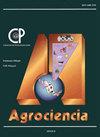以某栎林为参考的桉树复林生态恢复指标
IF 0.5
4区 农林科学
Q4 AGRICULTURE, MULTIDISCIPLINARY
引用次数: 0
摘要
评价一个地区以生态恢复为目的的再造林需要将相似指标与附近参考森林进行比较。本研究的目的是比较50多年前种植的茶树(Eucalyptus camaldulensis Dehnh)和邻近以荒漠栎(Quercus deserticola Trel)为主的森林的植被组成、结构、落屑及其在土壤中的分解。和Q. laeta Liebm(用作参考),在墨西哥的一个地区;并通过使用墨西哥的非本地物种获得恢复轨迹的定量指标。在再造林和栎林中,我们建立了12个样点,测定了它们的组成、结构和两个生态过程(落屑和分解)。此外,利用半球面透镜拍摄树冠的天顶照片来估计太阳辐射。当数据在正态分布内时,我们使用Student检验,当数据不在正态分布内时,我们使用Wilcoxon检验来比较所研究的变量。参考林在丰富度(68种和50种)上优于复林(p≤0.05);多样性(Simpson指数1.6 ~ 2.6和0.7 ~ 2.3);正常直径(21.3和13.7 cm)、凋落叶累积(18.2和9.2 Mg ha-1)、碎屑掉落(0.606和0.321 Mg ha-1 /月)和凋落叶分解(0.443和0.251 Mg ha-1 /月)。再造林具有较高的总辐射(5384 vs 4376 MJ m-2 -1)和树高(8.1 vs. 7.4 m),在栎林中,荒漠栎和松栎的重要性百分比分别为32.8%和26.9%,而在再造林中,山毛榉的重要性百分比分别为70%。50年后,再造林与森林在组成、结构、土壤过程等方面仍存在统计学差异。本文章由计算机程序翻译,如有差异,请以英文原文为准。
ECOLOGICAL REHABILITATION INDICATORS FOR ONE EUCALYPTUS REFORESTATION WITH AN OAK FOREST AS REFERENCE
The evaluation of reforestation for ecological restoration purposes in an area requires the comparison of similarity indicators with nearby reference forests. The objective of this study was to compare the vegetal composition, structure, falling debris, and their decomposition in the soil of a reforestation site of Eucalyptus camaldulensis Dehnh, planted more than 50 years ago, and a neighbouring forest dominated by Quercus deserticola Trel. and Q. laeta Liebm (used as reference), in an area of the State of Mexico; and obtain quantitative indicators of the trajectory of rehabilitation through the use of non-native species of Mexico. In reforestation and oak forest, we established 12 sampling sites where the composition, structure and two ecological processes (falling debris and decomposition) were determined. In addition, solar radiation was estimated by taking zenith photos of the canopy, using a hemispherical lens. When data was within normal distribution, we used the Student test, and when it was not, the Wilcoxon test was used to compare the variables studied. The reference forest outperformed reforestation (p ≤ 0.05) in: richness (68 and 50 species); diversity (Simpson index, 1.6-2.6 and 0.7-2.3); normal diameter (21.3 and 13.7 cm), accumulated leaf litter (18.2 and 9.2 Mg ha-1), detritus fall (0.606 and 0.321 Mg ha-1 per month), and litter decomposition (0.443 and 0.251 Mg ha-1 per month). Reforestation had a higher total radiation (5384 vs. 4376 MJ m-2 year-1) and tree height (8.1 vs. 7.4 m). The percentage values of importance were 32.8 and 26.9 % for Quercus deserticola and Q. laeta in the oak forest, and 70 % for E. camaldulensis in the reforestation. After 50 years, reforestation still showed statistical differences from forest in composition, structure, and soil processes.
求助全文
通过发布文献求助,成功后即可免费获取论文全文。
去求助
来源期刊

Agrociencia
农林科学-农业综合
CiteScore
0.50
自引率
33.30%
发文量
51
审稿时长
18-36 weeks
期刊介绍:
AGROCIENCIA is a scientific journal created and sponsored by the Colegio de Postgraduados. Its main objective is the publication and diffusion of agricultural, animal and forestry sciences research results from mexican and foreign scientists. All contributions are peer reviewed. Starting in the year 2000, AGROCIENCIA became a bimonthly and fully bilingual journal (Spanish and English versions in the same issue). Since 2007 appears every month and a half (eight issues per year). In addition to the printed issues, the full content is available in electronic format.
 求助内容:
求助内容: 应助结果提醒方式:
应助结果提醒方式:


